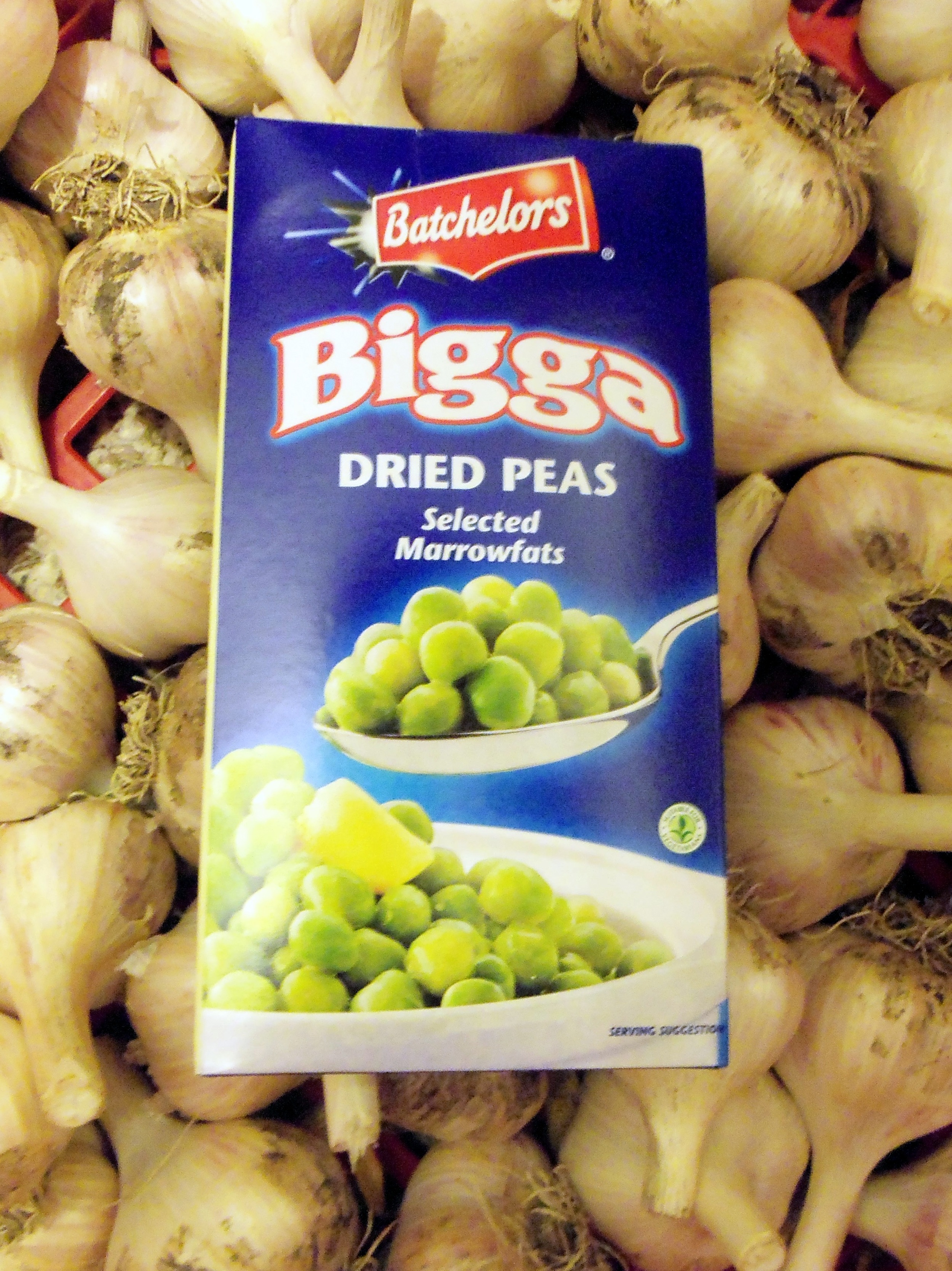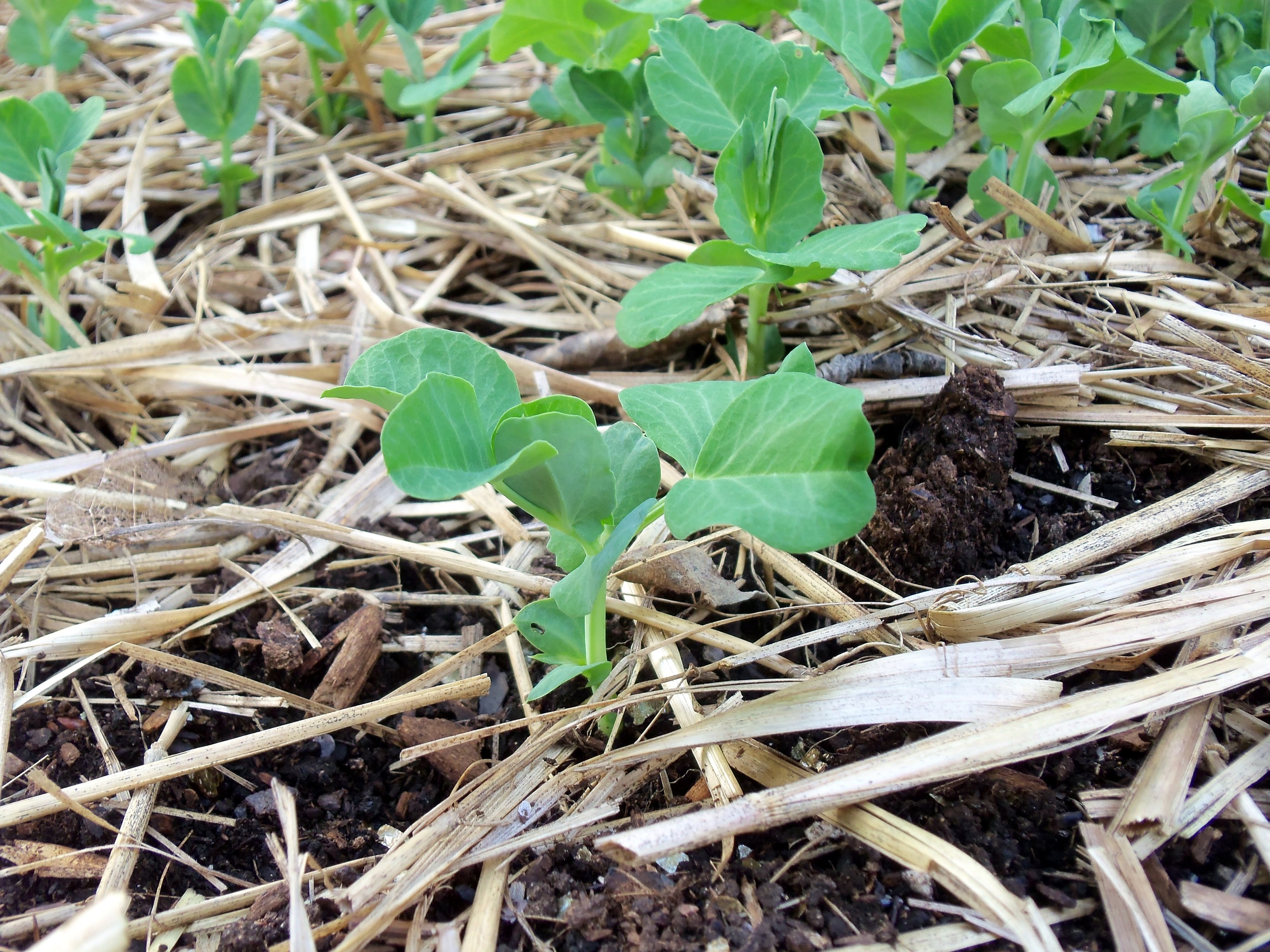“Bumper crop” is on the tip of everyone’s tongue when talking about the Summer of 2012. With bare spots marking the end of a harvest, now is a good time to revitalize the soil by planting a cover crop or green manure.
Green manures are basically plants that you grow as cover crops which add organic matter and nutrients to the soil. They also help prevent erosion, especially as a result of dry winter winds. While you can plant and consume some green manures, they are typically dug into the soil rather than harvested. Green manures can be almost any plant, but are typically fast growing and usually add nitrogen to the soil. Plants in the legume family (beans, alfalfa, and peas) are great for this purpose, which is what I will discuss here, but you can also use mustard, rye, and oats.
In my garden, most of my alliums, such as garlic, onions, and shallots, are harvested and stored. I replanted a few things for the fall, such as spinach and turnip tops, and the arugula self seeded, but there were still a lot of bare spots.
In the past, I had used mustard as a cover crop since I had plenty of seeds. I would broadcast seeds and let it grow. This also resulted in a supply of baby greens for the fall. One of the issues though is that mustard is marginally winter hardy. In the spring, rather than having partially decomposed organic matter, I had early spring greens…a happy predicament.
This past winter, I purchased boxes of dried peas at the supermarket to grow for pea shoots and decided to try them as a cover crop this year. Pea plants are not winter hardy, plus using these seeds is MUCH cheaper than buying seeds sold to grow in the garden. Buying seeds sold specifically for sprouting also tends to be much cheaper and they are the exact same seeds they sell for growing to mature garden plants. I am still working through a $4 bag of Red Russian Kale sprouting seeds that I purchased several years ago. Another advantage of using sprouting or eating seeds is that they are not dusted with fungicides, which is a possibility if you do not buy organic veggie garden seeds.
A couple of weeks ago, before I harvested my garlic, I placed a few tablespoons of seeds in moist paper towels and sprinkled a legume inoculant that I had purchased at Gaze Seeds. The inoculant contains bacteria that help legumes convert nitrogen into the type that plants can use. It isn’t necessary, but it does help to ensure that the seeds get inoculated with the right bacteria. I let them sit for a couple of days, keeping the towels moist. When I harvested my garlic I simply planted the sprouting seeds. Three tablespoons of seeds was more than enough for my 4’ X 4’ bed. To plant, I simply broadcast them and poked them into the ground. Easy peasy!
The picture shows the plants 10 days after planting. Peas grow well in cool weather, so there is still plenty of time to plant some. Come spring, I’ll have a nitrogen rich vegetable bed. I plan on lightly tilling the dead plants into the soil which will attract worms and will use this bed for Swiss chard. This is not only enriching the soil, but I am now also able to enjoy pea shoots in my sandwiches!





